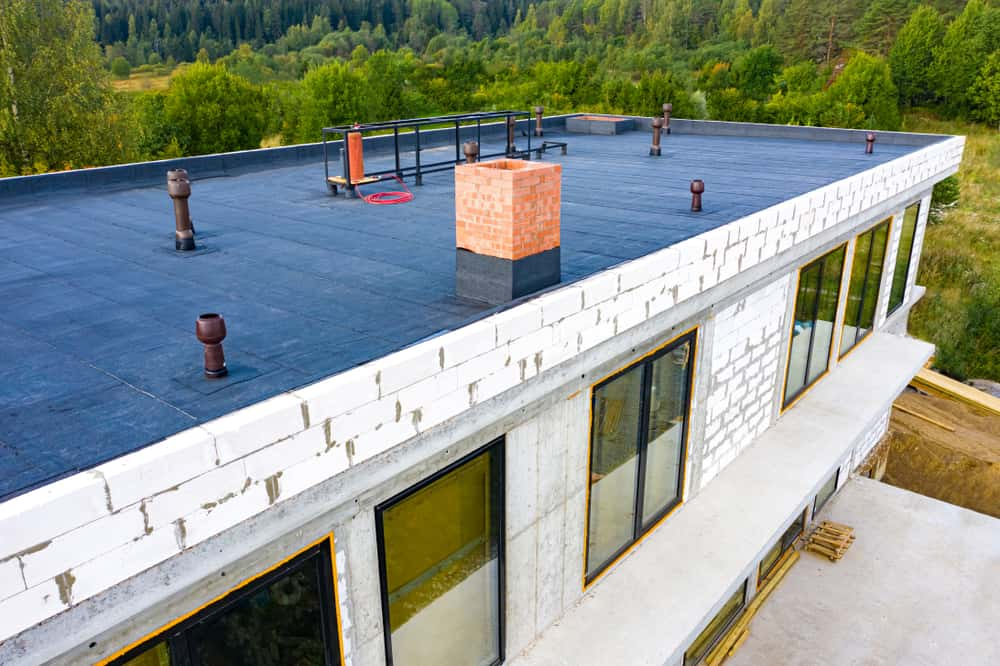Homeowners need to make some important changes to their home during the monsoon season that will protect their home against damages and save them money too!
Our home protects us against many external elements such as environmental changes, animal attacks, etc. Hence, it’s in our best interest to guard our homes against exposure to water and moisture even as we cheer the arrival of the monsoon season. Safeguarding our homes against rainy weather is especially important for people living in areas prone to heavy rain. Check the following tips on how to make your home monsoon ready.
Waterproofing
The roof of the house is the one area that will bear the brunt of rainfall and other environmental elements. Hence, it is important to waterproof the roof to avoid leakages when rainwater seeps into the rest of your house.
The conventional method of waterproofing the roof includes using brickbat coba or mud phuska; these items are rigid, but there is a chance of them moving with temperature variations resulting in seepages because of cracks.
The terrace too should be protected as it is exposed to harsh environmental elements such as sunlight and rain. Without waterproofing, the water can seep into the cracks on the walls and destroy the internal walls. The easiest solution to this problem is to apply a waterproof coating, which will add the benefit of beautiful walls too.

Rainproof Balcony
Prepare the surface of the balcony for waterproofing; remove any trace of dirt on the balcony as it won’t let the membrane bond with the surface properly. The primer will need a clean, smooth surface to stick to.
Fix the cracks and seal the joints by applying a polyurethane sealant and concrete-mortar cement. Apply the sealant to all the small cracks on the balcony and wait for 24 hours before applying anything else. Finally, the enormous cracks and chips can be filled with the concrete-mortar cement and wait for it to fully dry.
Next, the most important step is to apply a primer and mix it properly to homogenize the mixture. Wait for a minimum of three hours between applications.
Your balcony requires another layer of polyurethane sealant to be completely waterproof. Apply a layer of liquid waterproofing membrane with a brush or a roller over the entire surface for a rainproof balcony.

Rainproof the Rooms
The first sign of having water damage in your room is when water seeps in and appears on the internal walls. The ugly damp patches on your walls are the most common sign of water ingress.
It’s a cause of concern, and if it’s not treated quickly enough, it can cause significant damage to the walls of your home. Use a special coating of dampguard for any mild to severe dampness on the walls of your room. A rainproof room shall add to healthy living by giving you beautiful walls with fresh air all around.

Check the Electrical Points In Your House
There is always a chance of some electrical mishap in the house during the rainy season. Hence, homeowners must ensure that the power cables do not come into contact with water. Earth leakage circuit breakers are very useful as they safeguard against electrocution and electrical shock.
Make sure that all your faulty sockets and electrical equipment are fixed in time. If water seeps into your house, it can cause malfunction of the circuit breakers, fuses, socket outlets, etc.

Check Plumbing and Drainage Points
Having a proper drainage system in place can prevent waterlogging in your house. Ensure that silt or debris does not block the drain outside your house and that there aren’t any blockages in the drains that cause waterlogging.
An efficient plumbing and drainage system will ensure that no water is left stagnant or collected at any point; they can cause extreme damage to the walls and structure of your house.
Use a Humidifier to Remove Moisture Level
A humidifier will restore moisture to the air when the air gets too dry and causes irritation in many parts of your body. Humidifiers are especially effective against treating dryness of the skin, throat, lips, and nose.
However, it is important to note that excess moisture can damage your walls and even the paint, insulation, and ceilings. The moisture can increase the growth of mould on household surfaces destroying your monsoon decor, and this can easily affect the health issues of sensitive individuals. Keep the humidity level below 50% to eliminate the problem of excess moisture damaging your walls.

Wall Treatment to Seal Open Points and Cracks
Your walls can develop cracks over time, and these usually begin from the weak areas in your wall; moisture easily seeps into the structure of the home through these cracks and makes those damp patches on the walls. Remove these fissures using a suitable putty. To prevent any water leakage, this should be done before the monsoon season.
The exterior painting of your walls serves two purposes: to decorate and beautify your home and provide an external barrier. Find the right paint for your walls depending on whether you are painting on metal, stone, wood, or vinyl; this paint will defend against external elements such as rainwater.

Don’t let the monsoon put a damper on your mood! Visit HomeLane to book a free consultation call for creating the perfect monsoon décor for your home. Waterproof your house and make the inside of the home beautiful and monsoon-ready with HomeLane today!





